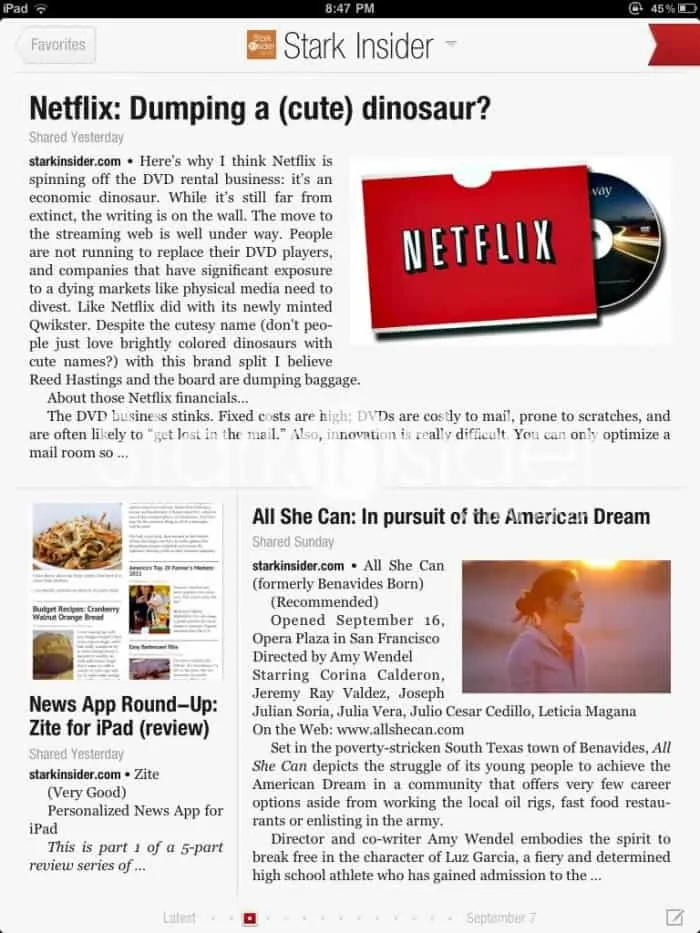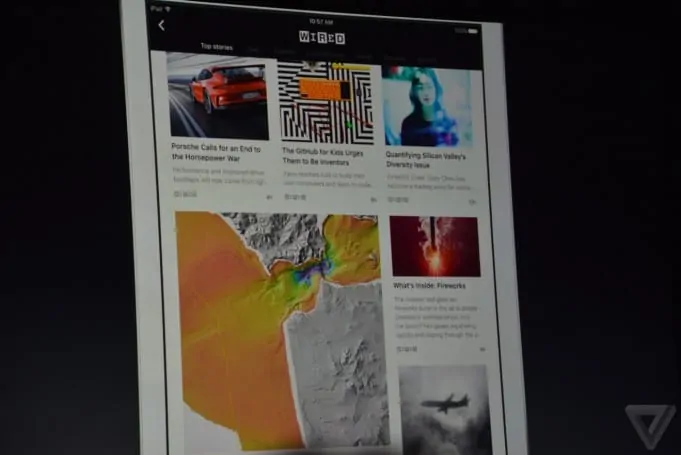Apple announced a lot today at its annual developer conference here in San Francisco.
As expected, there’s an updated version of its core OS X operating system dubbed “El Capitan” which arrives in the fall (dev beta available today), a broadening of Apple Pay (to UK, and now with support for loyalty cards), a context-based system “Proactive Assistant” aimed squarely at Google Now with the ability to present information on your iPhone before you realize you even need it, and updates to the Apple Watch operating system (WatchOS 2), and a new music streaming service (worst kept secret) and original broadcast radio programming (Beats 1), among many other updates.
But, there was one sneaky surprise tucked into this morning’s keynote that caught me off guard, and that’s…
News.
The new app is an aggregation service. You select from a variety of sources, such as the New York Times, Wired, TIME, GQ, Fortune, and Vanity Fair to name just a few of the marquee publishers already set to push content to iPads and iPhones. Stories appear in a beautiful, magazine-like flow, with gorgeous graphics, animations, and embedded videos. Swiping brings up the next story. In essence you can assemble your own custom magazine based on your favorite topics and news sources. From what I saw at the WWDC demo, it looks impressive. It also reminded me of…
Flipboard.
We all know, and love Flipboard. Mike McCue and his team essentially created the glossy news aggregation segment. And have dominated it ever since. No one comes close to the elegant presentation, depth of content, and ease of use. Not to mention, using Flipboard is fun.
The party may be coming to an end. Or, at the very least, it’s about to get a lot more competitive.
Apple clearly has its sights set on the news-aggregation business. And, that, of course, is ultimately going to be about advertising. If Apple can own the eyeballs by locking in content-providers to its News platform, it can monetize it — essentially monetizing an entire industry. Just like it did with music. Movies. And apps. The cycle continues. The ecosystem expands.
TechCrunch said, “Apple just threw cold water onto the venture capital side of the news-aggregator business” in its assessment of the announcement.
I think that’s mostly true. Today things just got a whole lot more interesting for aggregators such as Flipboard, Yahoo, Circa, among others who tap into various content providers to present it to users in convenient ways (predominantly focused on mobile devices).

However, I don’t think it’s all bad news for the start-ups.
First, there’s nothing new about David-Goliath stories here in Silicon Valley. Look at what Pebble is doing with its smartwatch. Despite facing Google (Android Wear) and Apple (WatchOS) it has still managed to carve out a successful market. And a very loyal customer base.
Then there’s existing users. Flipboard has millions. I doubt we’re going to abandon the app anytime soon. If anything we’ll run it in parallel with others, as most of us already do. For instance, I like getting the day’s top stories from the likes of Circa and Yahoo Digest. But when I want to dig deeper, say, into filmmaking or cars, I pull up Flipboard.
Finally, there’s room for more than one digital publishing service. Flipboard is one. Google is one (Newsstand). Apple is now one. If I’m a major publisher, I’m looking at tapping into as many distribution systems as possible — or at least ones that will reach my target markets, and give me the broadest reach possible. Those users are now on tablets and smartphones and smartwatches. And less often, on desktops. Apple. Google. Flipboard. Yahoo. All of have become the gateways for reaching today’s audiences.


